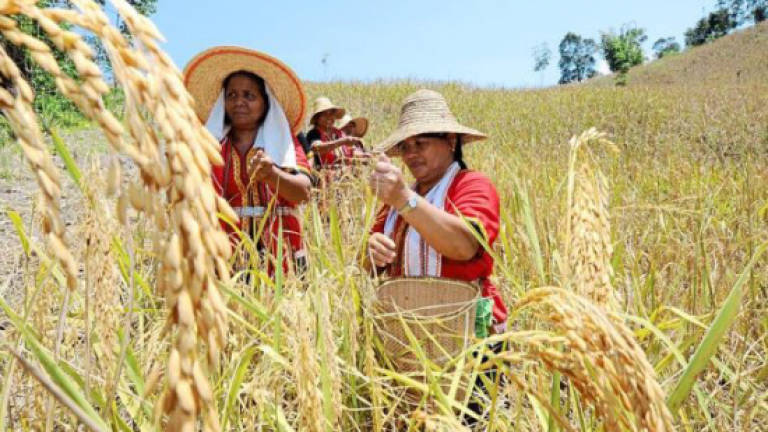Rice, price and everything not-so-nice

ONE top Malaysian leader prefers to eat quinoa – a complete protein, it is gluten-free, rich in dietary fibre and has the capability of lowering LDL or bad cholesterol – although allegedly 23 times more costly than other grains. But for many Malaysians, rice is the preferred option.
On June 6 this year, newly-minted Agriculture and Agro-based Industry Minister Salahuddin Ayub announced the Cabinet had agreed to end the monopoly to import rice given to Padiberas Nasional Berhad (Bernas).
Will this new policy by the new ruling Pakatan Harapan (PH) coalition reduce the price of this food staple? Will ending Bernas' monopoly help 400,000 rice growers in this country? Comprising a reported 11.2% of Malaysia's registered voters, rice growers live mainly in Kedah, Perlis and Perak.
Malaysia's rice bowl, Kedah is a state where Harapan's control of the statehouse is as sturdy as a stalk of rice. In the May 9 general election this year, PH won 18 state seats in Kedah, the same number as the combined opposition – PAS secured 15 seats while the Barisan Nasional, which previously ruled the state, obtained a meagre three seats.
Lowering the price of rice involves three parties – Bernas, consumers and rice growers – and the three interlocking issues: The monopoly to import rice, the controlled price of white rice in Malaysia and the financial viability of growing rice in this country.
In a recent newspaper interview, Bernas' chief executive officer Ismail Mohamed Yusoff made three points. First, about 60% of rice consumed in this country is produced by local farmers. Second, the price of locally-produced rice is fixed by the government. Third, imported rice, which accounts for 30% of Malaysia's consumption, cannot be sold at a price lower than the local variety.
Allowing other companies to import rice won't reduce the local price of rice because the imported grain must be sold at the same price or higher than the local variety. This suggests the need to cut the controlled price of locally-grown rice. However, a lower price could mean more financial hardship for local rice growers.
PH's decision to terminate Bernas' monopoly may be a response to a memorandum submitted last October to the then Najib administration by Padi Rescue, a non-governmental organisation (NGO) representing farmers, rice millers and warehouse owners. Alleging "unfair practices," the NGO proposed ending Bernas' role in overseeing the supply of rice, including its monopoly on rice imports.
If the price of local rice remains fixed while the international price of the grain fluctuates, this could have two possible outcomes.
If the global price of rice falls below that of the local variety, the importer makes windfall profits.
However, a higher international price will either compel the importer to absorb the price differential or stop importing rice. In the latter event, there could be a significant shortfall of rice.
Bernas claims it uses its profits from importing rice to pay annual subsidies to local farmers – amounting to RM700 million to RM800 million – before being reimbursed by the government.
Even if Bernas loses its monopoly of importing rice, Malaysians will enjoy cheaper prices only if the controlled price of local rice is either lowered or pegged to international prices.
Because Malaysia is a high-cost producer of rice, to ensure a reasonable rate of return to local farmers, the local price of rice must be priced above that prevailing in international markets.
According to a Straits Times article, Malaysia produces about two million tonnes of rice annually – well below this country's estimated annual consumption of three million tonnes.
To meet this shortfall, the government spent US$377.4 million in 2016 to import 822,000 tonnes of rice.
To meet this gap in supply, Padi Rescue argues the government should push for higher output of local rice instead of resorting to imports.
Given the PH government's priority in reining in government spending, should Putrajaya continue to control the local price of rice to help local farmers? Should local farmers be encouraged to increase the output of rice?
For decades, farmers in this country have been encouraged to grow rice to ensure Malaysia's food security. Should this objective be modified or abandoned?
Putrajaya should note Malaysians' food preferences have changed. According to UNI Malaysia Labour Centre president Datuk Seri Mohamed Shafie Mammal, Malaysians' intake of wheat-based foods has jumped by 60% from 2008 to 2017 due to the growing popularity of pasta, bread and confectionary.
During the same period, rice consumption in this country rose by a sedate 10%.
Yet another issue is the financial implications of terminating Bernas' monopoly of importing rice before the scheduled 2021 date.
Despite Bernas' claims of minimal profit margin – between 0.4% and 1.8% for the last three years – unaudited accounts show a handsome pre-tax profit of RM133 million for the financial year ending Dec 31, 2016.
Opinions expressed in this article are the personal views of the writer and should not be attributed to any organisation she is connected with. She can be contacted at siokchoo@thesundaily.com